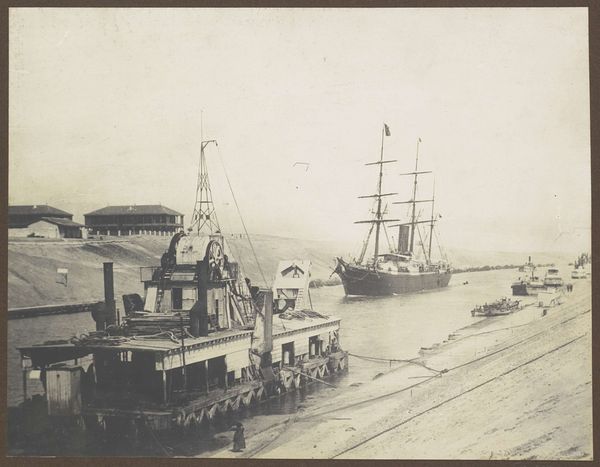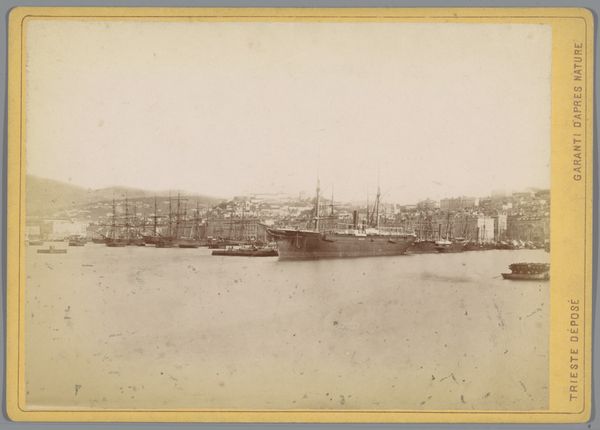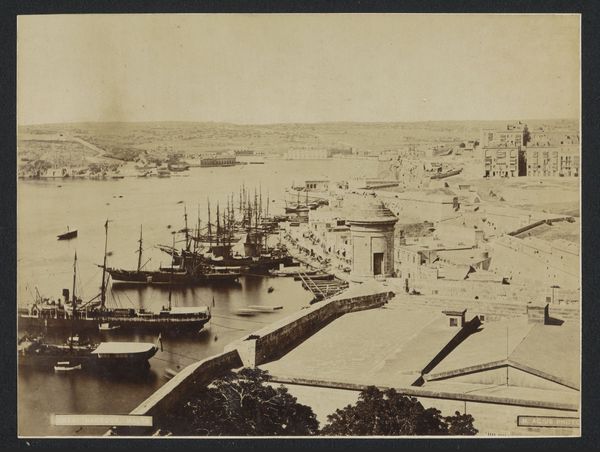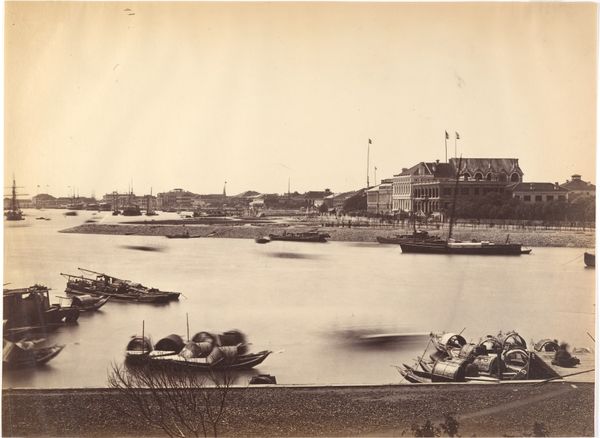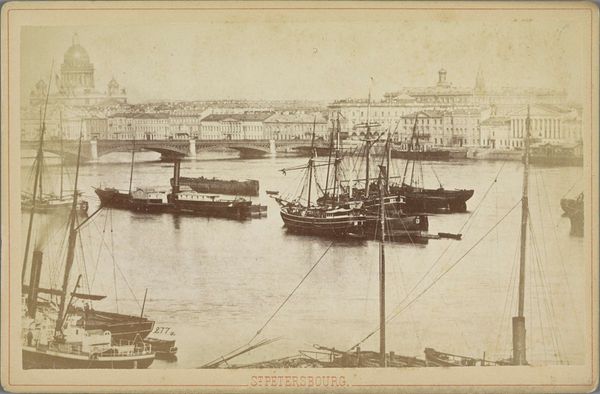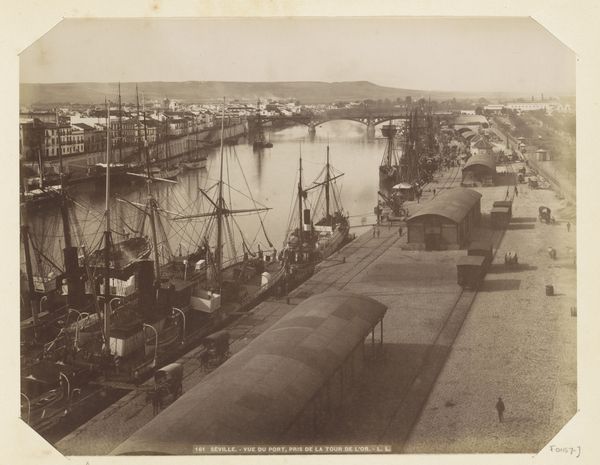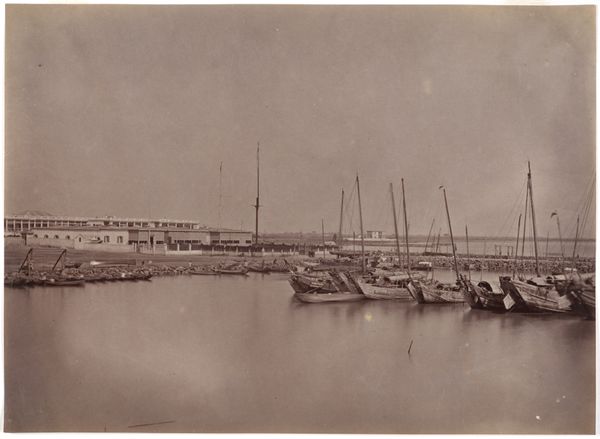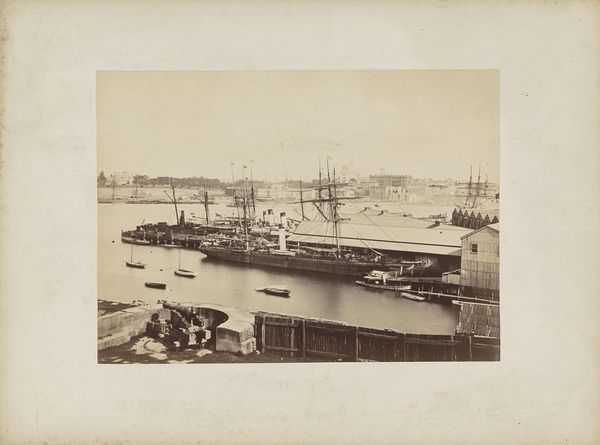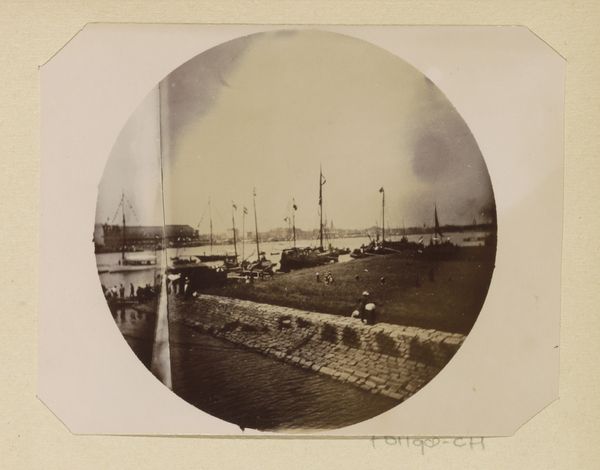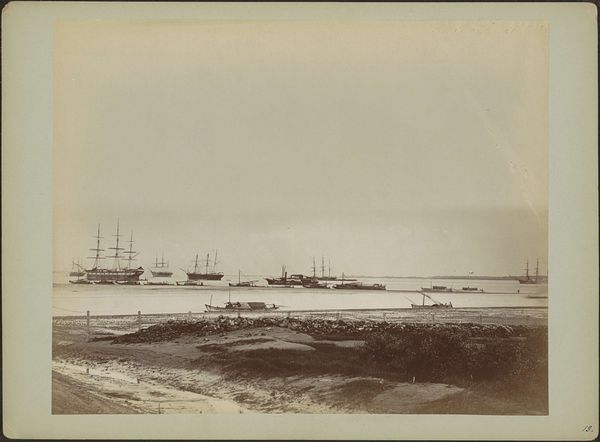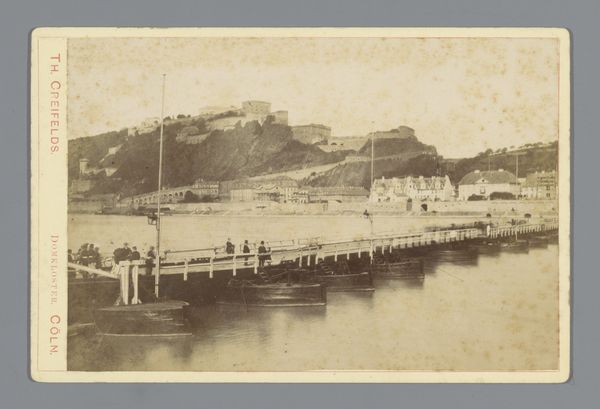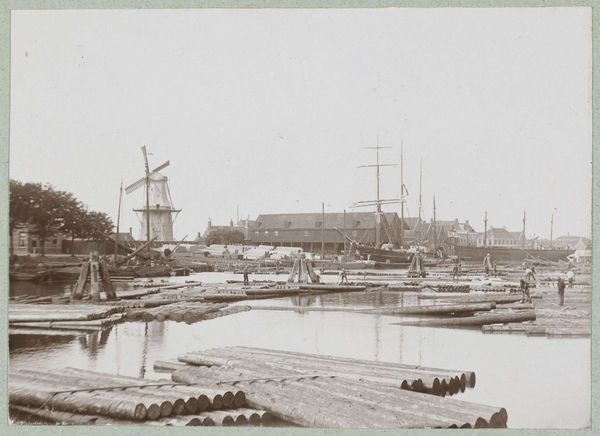
silver, print, photography
#
silver
# print
#
landscape
#
outdoor photography
#
photography
#
france
#
monochrome photography
#
realism
Dimensions: 30 × 41.3 cm (image/paper); 50.8 × 64.4 cm (album page)
Copyright: Public Domain
Curator: Standing before us is Gustave Le Gray's "The Jetty at Sète," a silver print from 1857 currently residing here at the Art Institute of Chicago. Editor: It's like stepping into a faded memory. I immediately feel a sense of stillness and melancholy, almost a yearning for a time that’s long past. The sepia tones feel like a veil, and the composition, with the dominating jetty and the clustered ships, whispers stories of departure. Curator: That sense of melancholy really gets to the heart of Le Gray's approach, I think. Incredibly, he combined two separate negatives—one for the sky and one for the sea and land—to overcome the technical limitations of capturing both with detail at that time. Editor: Ah, that explains the seamless transition. The sky feels infinite and rather bleak, a perfect mirror to the sea of emotions that it invokes. What strikes me too is the use of sailing ships, all nestled closely at harbor. What could that harbor symbolize? Is it safety or maybe constraint, a pause before they must again depart? Curator: Given the date, one could interpret the imagery through the lens of France's colonial ambitions and maritime power. Ships were, after all, potent symbols of connection, trade, and often, conquest. That building, on the right is no accident. It seems as though he composed all his images to evoke certain powerful feelings. Editor: I think there’s also a profound reflection of impermanence. Le Gray managed to capture something truly enduring, and now over a century later, his picture causes us to see into the world that was... and can't be, because change itself is at the heart of life. The sea is forever flowing! The ships depart and bring about changes elsewhere... so the image stands at a doorway, reflecting that moment of departure, the place on a boundary. Curator: It's remarkable how one image can hold so much, both technically and conceptually. I see a certain striving, maybe a bit melancholy as you say, but there's peace also. Editor: Yes! The picture's aged look suggests the enduring human spirit despite facing change; as time passes everything and everyone shifts— the sepia tone provides context—it offers hope in change. Curator: A powerful meditation, wouldn’t you agree? Editor: A timeless echo, definitely.
Comments
No comments
Be the first to comment and join the conversation on the ultimate creative platform.
